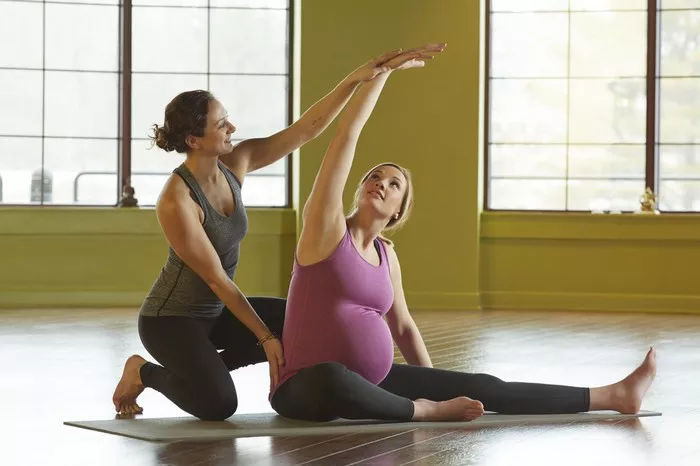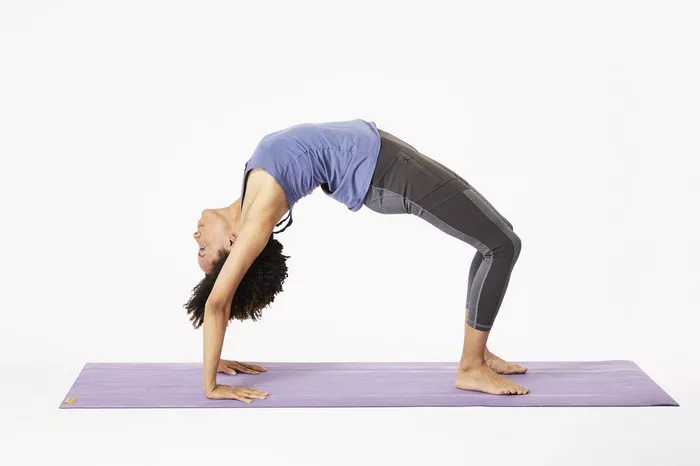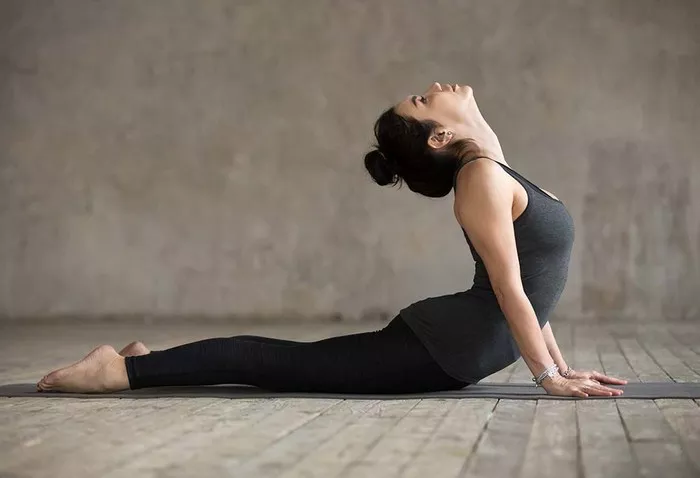Pregnancy is a time of profound physical, emotional, and spiritual transformation for both partners. While expectant mothers often turn to yoga to support their journey, the inclusion of partners in prenatal yoga classes can enhance the experience and deepen the connection between couples. Pregnancy yoga for couples offers a unique opportunity for joint participation in the preparation for childbirth, fostering a sense of unity and shared responsibility. In this article, we explore the benefits of pregnancy yoga for couples and provide practical tips for incorporating yoga into this transformative journey.
The Benefits of Pregnancy Yoga for Couples
1. Physical Well-being: Pregnancy yoga offers gentle stretching, strengthening, and relaxation techniques tailored to the needs of expectant mothers. For couples, practicing yoga together encourages mutual support and understanding of each other’s physical challenges and limitations during pregnancy. Partner-assisted poses promote flexibility, alleviate discomfort, and improve circulation, contributing to overall well-being for both partners.
2. Emotional Connection: Pregnancy can be a rollercoaster of emotions for both partners as they navigate the joys and anxieties of impending parenthood. Yoga provides a nurturing space for couples to connect on a deeper level, fostering communication, empathy, and trust. Partner breathing exercises and guided meditation promote emotional bonding and help couples cultivate a sense of calm and presence amidst the whirlwind of pregnancy.
3. Preparation for Childbirth: Labor and childbirth require physical stamina, mental resilience, and emotional readiness from both partners. Pregnancy yoga equips couples with practical tools and techniques to navigate the challenges of labor together. Through practicing pain management strategies, such as breathing techniques and relaxation exercises, couples can build confidence in their ability to support each other during labor and delivery.
4. Bonding with Baby: Prenatal yoga creates a nurturing environment for couples to connect with their unborn child. Partner poses, such as gentle massage and joint visualization, allow partners to cultivate a sense of intimacy with the baby and deepen their bond as a family unit. Engaging in yoga together can also help partners feel more involved in the pregnancy journey, fostering a sense of shared responsibility and anticipation for the arrival of their little one.
5. Stress Reduction: Pregnancy often brings a multitude of stressors, from physical discomfort to logistical challenges and anxieties about the future. Yoga provides couples with valuable tools for stress management, promoting relaxation, mindfulness, and acceptance. By practicing yoga together, couples can create a sanctuary of peace and tranquility amidst the busyness of pregnancy, fostering resilience and emotional well-being.
Practical Tips for Incorporating Yoga into Pregnancy as a Couple
1. Attend Prenatal Yoga Classes Together: Look for prenatal yoga classes specifically designed for couples or those that welcome partners to participate. These classes often incorporate partner poses, breathing exercises, and guided relaxation techniques tailored to the needs of expectant mothers and their partners.
2. Create a Sacred Space at Home: Set aside dedicated time and space at home for practicing yoga together. Create a calming atmosphere with dim lighting, soft music, and comfortable yoga mats or cushions. Consider incorporating elements of nature, such as candles or essential oils, to enhance the sensory experience and promote relaxation.
3. Practice Mindful Breathing Together: Take time each day to practice mindful breathing exercises as a couple. Sit comfortably facing each other, close your eyes, and synchronize your breath, inhaling and exhaling deeply and slowly. Focus on the sensations of the breath as it enters and leaves your body, allowing yourselves to be fully present with each other in this shared moment of connection.
4. Explore Partner Poses: Experiment with gentle partner poses that promote flexibility, balance, and trust. Try simple poses such as seated back-to-back twists, supported forward folds, or gentle backbends with one partner providing support for the other. Remember to communicate openly and listen to each other’s feedback to ensure safety and comfort.
5. Practice Relaxation Techniques: Incorporate relaxation techniques such as guided meditation, progressive muscle relaxation, or yoga nidra into your daily routine as a couple. Set aside time before bed to unwind together, dimming the lights and practicing deep relaxation techniques to promote restful sleep and emotional well-being.
6. Celebrate Milestones Together: Use yoga as a way to celebrate milestones and special moments throughout the pregnancy journey. Consider practicing partner yoga poses to commemorate significant events such as the first ultrasound, baby showers, or the nesting phase as you prepare for the baby’s arrival. Use these shared experiences to deepen your connection as a couple and cultivate gratitude for the miracle of pregnancy.
Conclusion
Pregnancy yoga for couples offers a holistic approach to supporting the physical, emotional, and spiritual well-being of both partners during the transformative journey of pregnancy. By practicing yoga together, couples can strengthen their bond, cultivate mindfulness, and prepare for the challenges and joys of childbirth and parenthood as a unified team. Whether attending prenatal yoga classes together or establishing a regular yoga practice at home, couples can harness the power of yoga to nurture wellness and deepen their connection throughout the pregnancy journey and beyond.
FAQs:
Which month is best for yoga in pregnancy?
The best month for yoga during pregnancy depends on individual comfort, but generally, the second trimester, around months 4 to 6, is ideal. This is when energy levels are higher, and discomfort from morning sickness or fatigue may have diminished.
Is it OK to do regular yoga while pregnant?
It’s generally safe to continue regular yoga during pregnancy, but modifications are crucial. Prenatal yoga classes or instructors experienced in prenatal modifications can provide guidance. Avoiding high-intensity poses, excessive stretching, and lying on your back for extended periods is advisable. Listen to your body and adapt your practice accordingly, focusing on gentle stretches, breathing exercises, and relaxation techniques.
What to avoid in yoga when pregnant?
During pregnancy, it’s essential to avoid poses that compress the abdomen or put excessive pressure on the belly. Avoid deep twists, intense backbends, inversions, and poses that challenge balance. Additionally, avoid hot yoga or heated environments, as they can raise the body temperature to levels that may be harmful to the fetus. Always consult with a healthcare provider before starting or continuing any exercise routine during pregnancy.

















